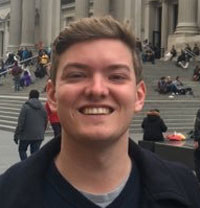Nomi Prins: Financial System Worse Now Than 2008
Nomi Prins joined Paul Gallagher of the Executive Intelligence Review (EIR) to discuss the state of the current financial system and what the economy is showing us. While meeting in Washington D.C the previous week, Prins’ offered her analysis as a former Wall Street banker who currently works on calling truth to power in the world of government and finance.
Nomi Prins begins the conversation by prefacing that, “The 2008 crisis has not been resolved. What has happened is that everything in the financial system has shifted forward.”
“When we had the crisis in 2008 with interdependencies, not just in the U.S but throughout the world, the solution to that was for the Federal Reserve to cut rates to zero and launch a quantitative easing program. They aimed to not just keep the program in the United States to help credit and liquidity, but to expand it throughout the world.”
Nomi Prins is a best-selling author of multiple books including her recent history filled examination of the connections between Wall Street and Washington, All the Presidents’ Bankers. Prins’ is a former managing director at Goldman Sachs and held several high level positions at various Wall Street firms.
Nomi Prins goes on to note, “There has been an almost decade long coordinated period of elevating the markets, helping banks maintain liquidity and keeping reserves from these banks that don’t lend into the main economy. At some point there will be a “give” in that strategy.”
“We’ve already had the Federal Reserve raise rates by 75 basis points beginning in December 2015 through March of 2017. Effectively at this point 25 basis points per year. What that is doing, while other central banks are keeping rates at negative or close to zero rates… is that it is edging the possibility for more defaults to creep into the system. On one hand that reaction of markets has been to all of this cheap money to go up. There has been nowhere else for it to go. Money is not turning any interest.”
She then went on to push further on what rates meant for the real economy stating, “But when the rates start going up, all of the debt that has been created during this period begins to have to be repaid at potentially higher levels than expected. All of the corporate debt that has been reissued, all of the money that has flown throughout the world all of a sudden has to consider retracting.”
“We’ve already started to see that since the 2015 and the Federal Reserve hike. We’ve had higher default rates in corporates and also in U.S dollar denominated corporates than we’ve had in any of the years since the crisis started. We had a second round of that in 2016. As we’ve seen, we’ve had defaults increasing almost in tandem with rates being raised by the Fed.”
“At some point that is going to create a situation where those companies start to have difficulties repaying, particularly in emerging markets outside of the United States. That’s going to hurt their markets. Then it will hurt the U.S market as confidence and credit begins to crumble throughout the world. It may begin peripheral to the U.S, but it will come back.”
When asked what policymaker response has been since the global financial collapse Prins’ responded, “First of all, the big six banks in the U.S (JPMorgan Chase, Citigroup, Bank of America, Wells Fargo, Goldman Sachs and Morgan Stanley) after looking at the combination of asset size and risk profile. Their 21 to 25 percent larger in asset size than they were before the crisis. It is hard to argue that regulation has kept them from growing.”
“Their deposit size is somewhere between 30 and 40 percent greater on average collectively than it was before the crisis. It is really hard to look at these institutions and say they are having problems growing due to punitive regulations.”
“What they have had problems doing is with title two of the Dodd-Frank Act. It asks them to simply write what was called a “living will” so that in the case of a financial crisis… they have an exit plan or at least a strategy for how they would do it in a situation where the market was to dry up again. They were required to show how they would react under various scenarios to the FDIC and the Federal Reserve.”
“Seven of the eight largest banks in the United States last April either did not pass with both the FDIC and the Fed or was only able to pass with one of the respective government organizations. Our largest institutions couldn’t even pass the living will or what I call the “imagination test,” required to prepare for what could happen.”
To catch the full interview with Nomi Prins on the financial system CLICK HERE.
Thanks for reading,
Craig Wilson, @craig_wilson7
for the Daily Reckoning



Comments: